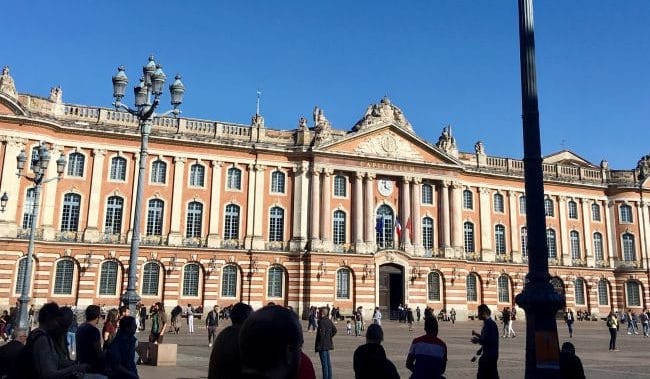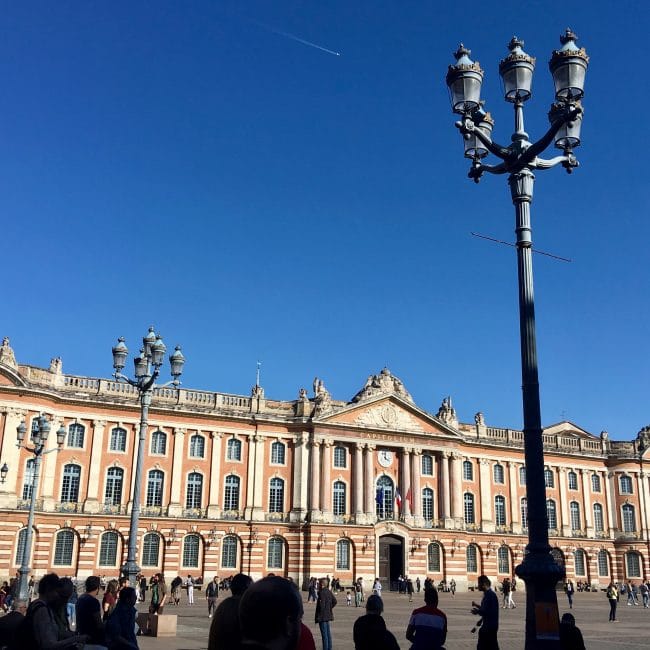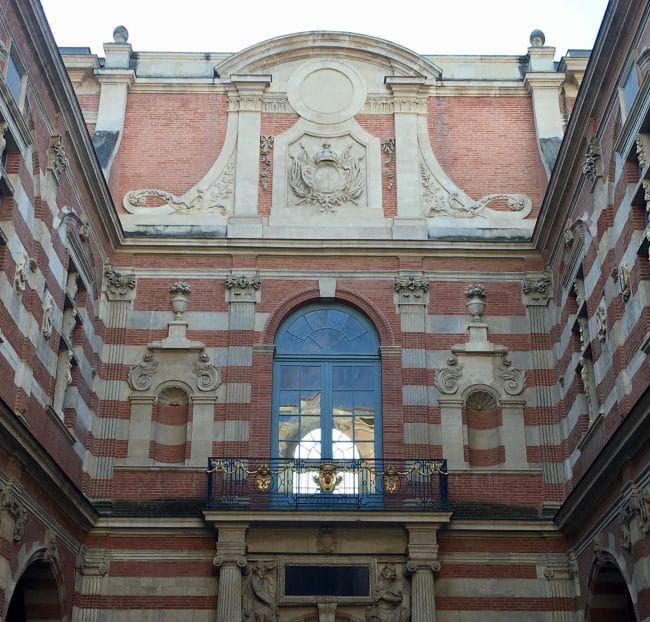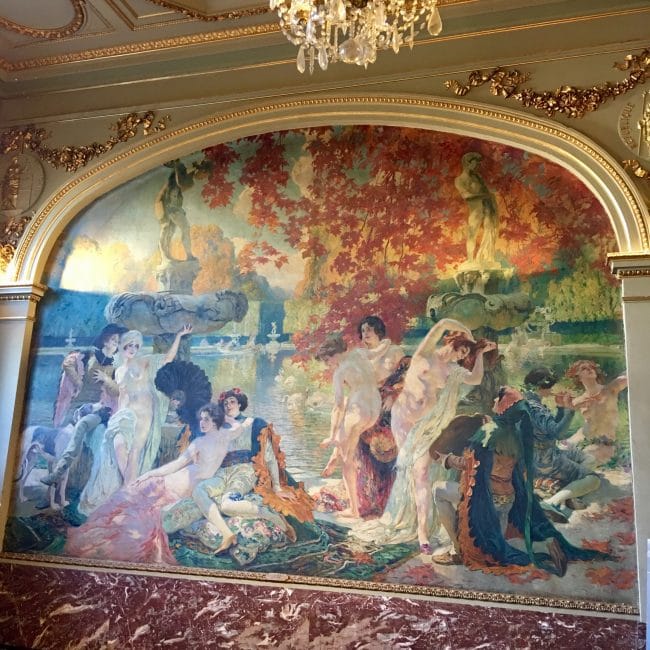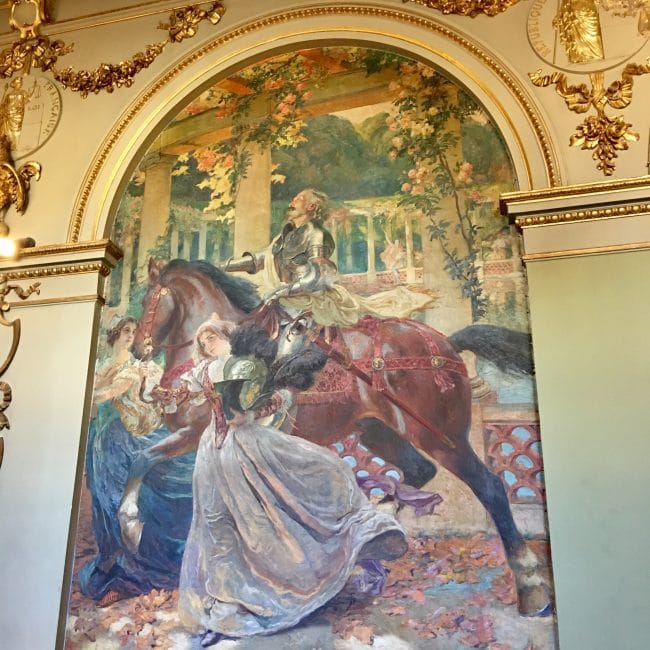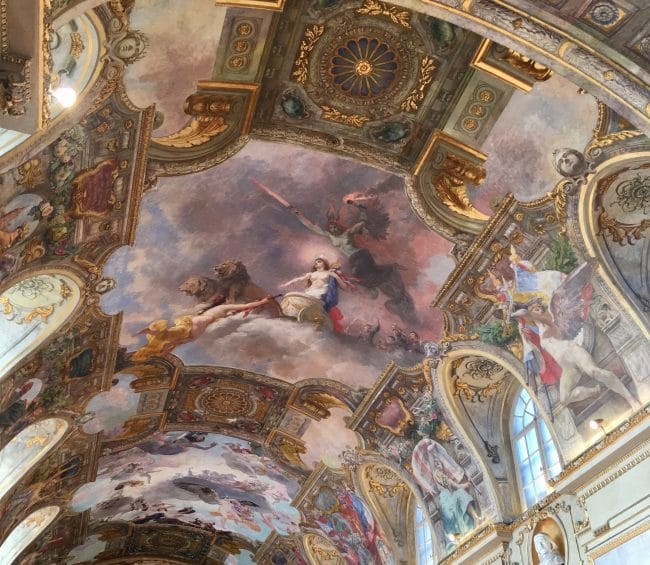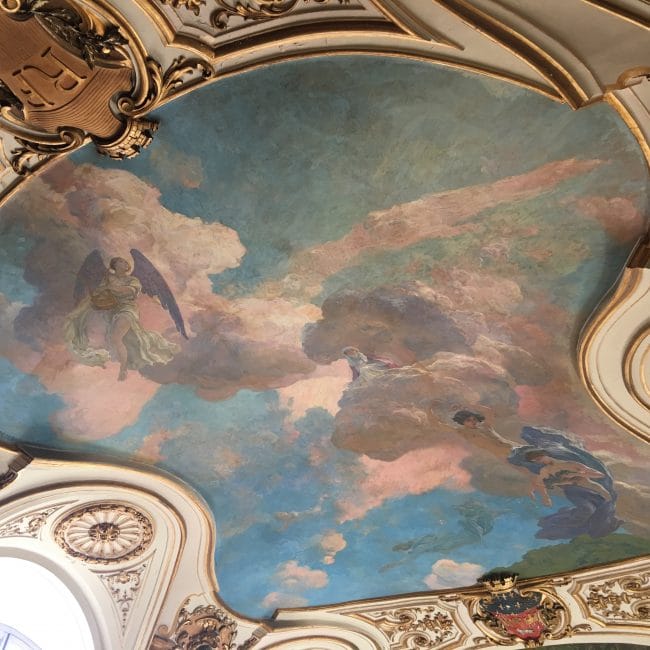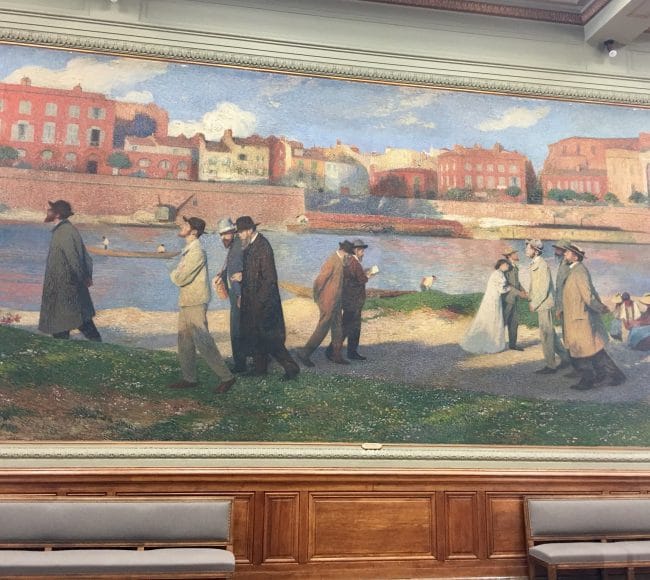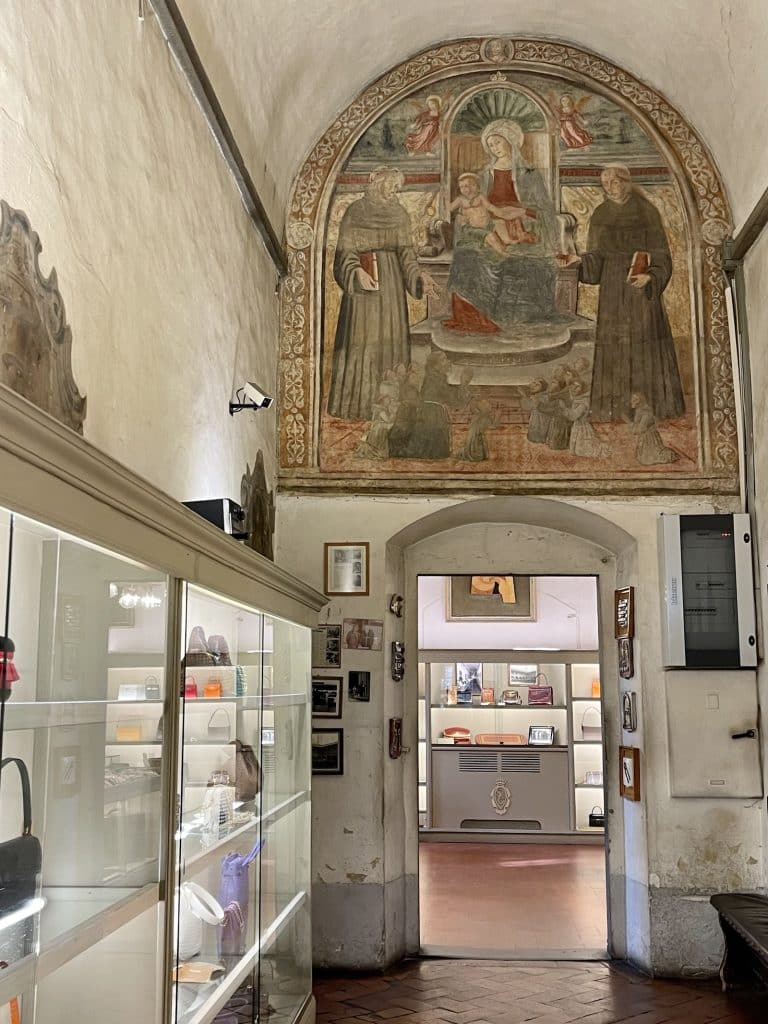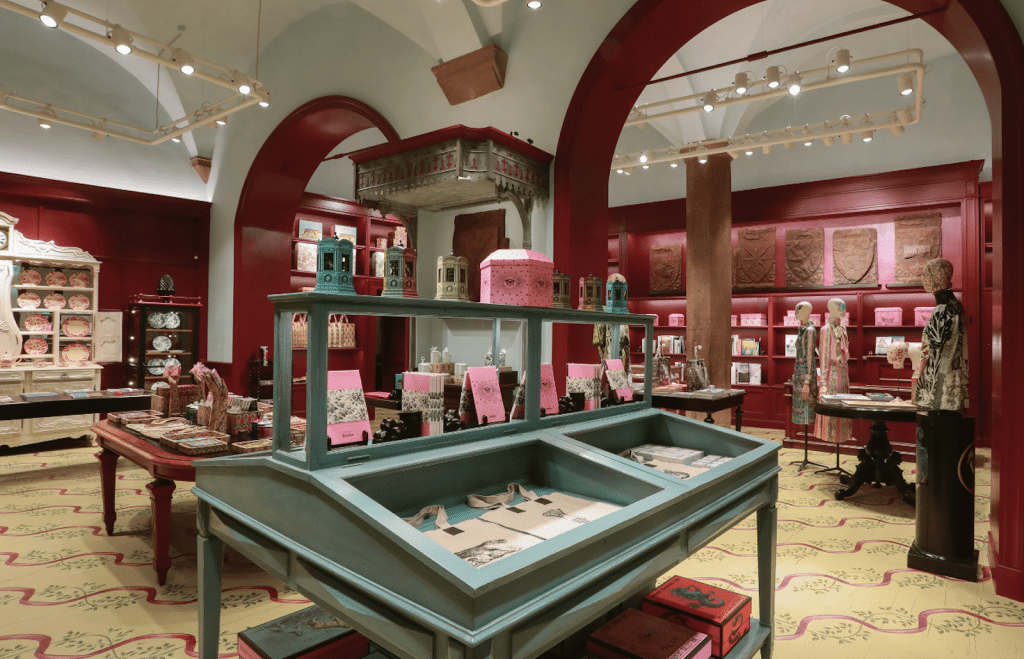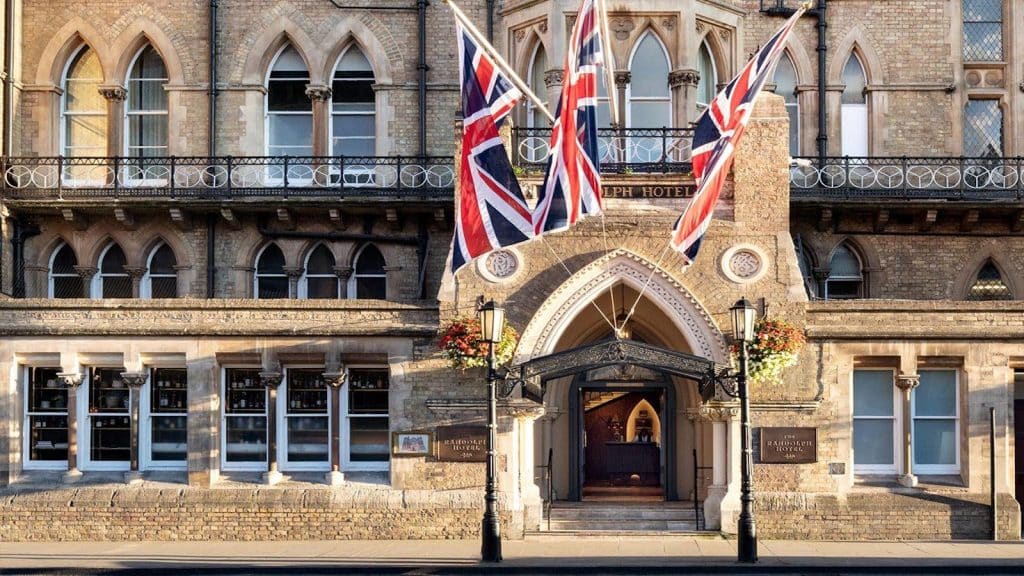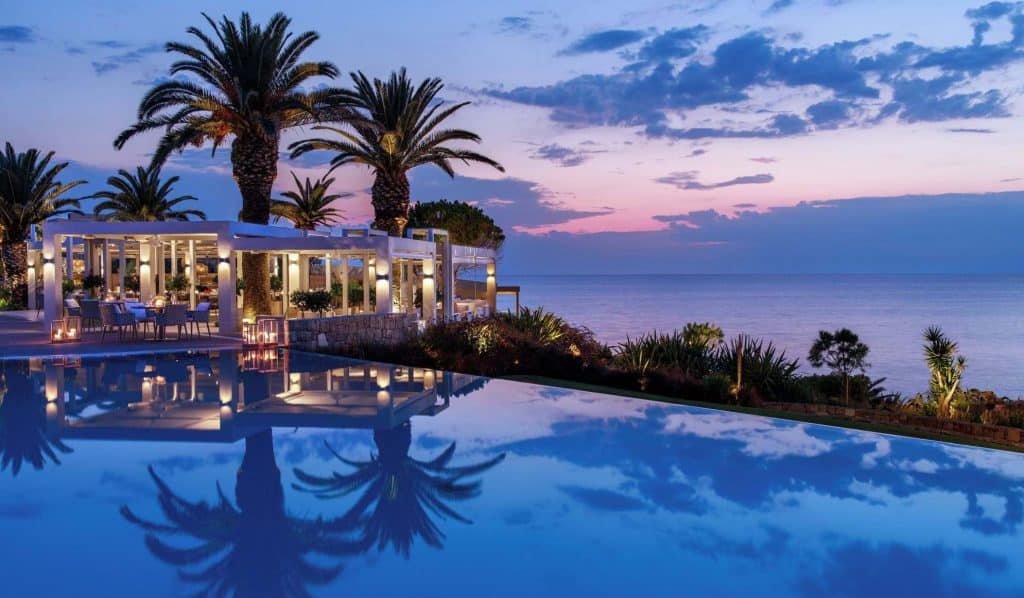The dusky pink neoclassical Toulouse Capitole building really is the vibrant heart of the city. Sitting proudly on the Place Du Capitole; a great rectangular square full of outdoor cafe’s which attract locals and visitors alike, the Capitole is a museum in its own right. But it’s a little livelier than most museums as here you can visit the opera, obtain a passport or get married, and it’s also the place where all local policy is decided upon.
The square represents the symbolic seat of power in Toulouse, and is adorned with an Occitan crosse designed by renowned local artist, Raymond Morretti. The end of each arm shows the sign of the zodiac, the cardinal points, the months of the year and the hours of the day. The eight columns on the outer building symbolises the eight Capitouls (municipal magistrates) and was built between 1750 and 1760. There are also sculptures representing the arts and sciences, and strength and justice.
The inner courtyard, bounded by side galleries dates back to the 17th century, and is the oldest part of the present day building.
Te end of the 19th century saw the start of a major campaign to restore and complete the Capitole. This period saw some of the great Toulouse artists use their talent to adorn several of the state rooms. Weddings take place in the Salle Gervais which has been decorated with paintings by Paul Gervais. The theme is love and includes artworks which depict love at 20, love at 40 and love at 60 years of age. The island of Cythera where legend has it that Aphrodite was born is featured, as is Eros, surrounded by four nymphs: Grace, Purity, Innocence and Faithfulness. Gervais’ compositions recalls the world of Fetes Gallantes with voluptuous bathers with Belle Epoque hairstyles.
Another breathtaking salon is the Salle Des Illustres. Twenty Toulouse painters and sculptors all took part to develop various themes immortalising the city’s history under the banner: ‘Glorious Episodes in Toulouse Life, Toulouse City of the Arts, and Culture and Defense of the Fatherland’. Twelve paintings around the room celebrate the city’s artistic and literacy genius. La Belle Paule is an emblematic figure of the city’s artistic life, and as the muse of poets and painters, she is shown on her balcony summoned by the Capitouls, so that the citizens could revel in her beauty.
The great stairway, built in 1886, was decorated early in the 20th century by Jean-Paul Laurens. Another great muse of Toulouse poetry and the arts, Clemence Isaure, is shown enthroned on the ceiling.
In the Salle Henri-Martin, the artist evokes the passing of time both in the city and the countryside. Here the artist uses the same free brush strokes as the impressionists which sets his work apart with a more academic style.
In the council chambers, there are other artworks in various styles representing the city, including the Garonne river, the Autan wind, violets and farm produce from the Toulouse region including wine and wheat.
Tours of the historical rooms can be taken from Monday to Friday, 8:30 am to 7 pm.
Sundays and bank holidays: from 10 am to 7 pm. Closed when receptions take place, on Saturdays, on December 25th and on January 1st.
Free admission.
For further information visit: https://www.toulouse-visit.com/le-capitole




